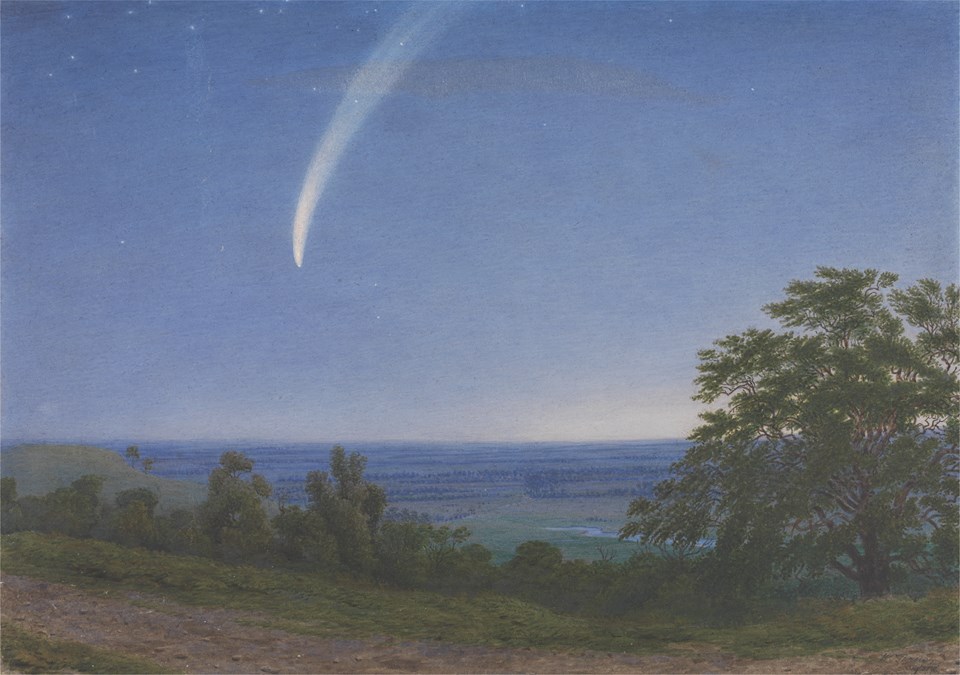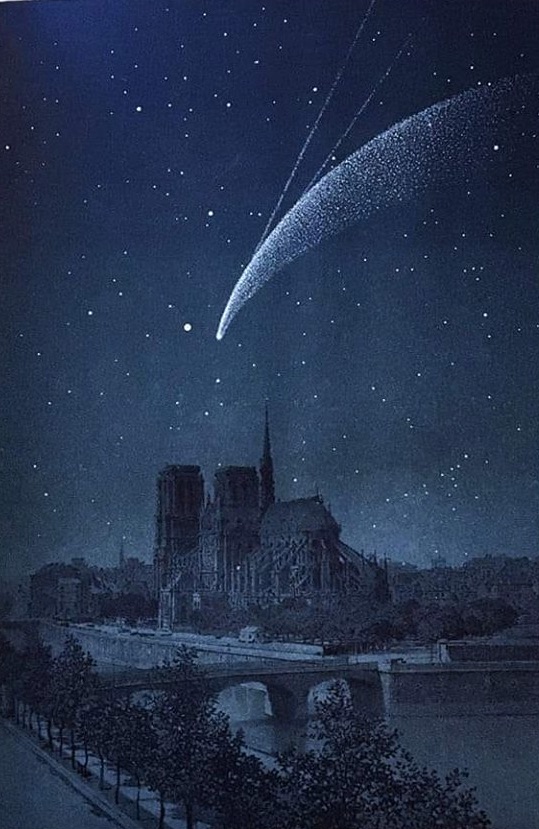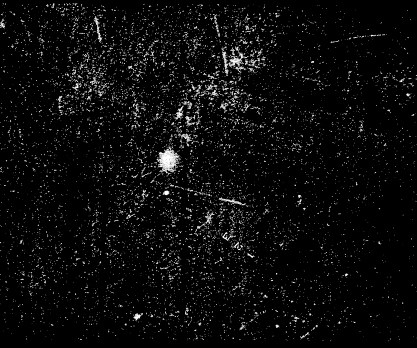
Perihelion: 1858 September 30.46, q = 0.578 AU
Among the many individuals who made important contributions to astronomy during the mid-19th Century was the Italian astronomer Giovanni Donati, who observed from the Observatory of Florence and who was Director of that institution from 1864 until his death (at age 46) in 1873. He made the first observations of a comet’s spectrum when in August 1864 he visually observed the spectrum of Comet Tempel 1864 II when that object was passing close to Earth. He is also credited with the discovery of five comets between 1855 and 1864.
Donati discovered what would be his best comet on the evening of June 2, 1858, at which time it was 7th magnitude and located near the “head” of the constellation Leo. It traveled slowly northward from that point and brightened, and by the end of August was nearing conjunction with the sun, some 25 degrees north of it; meanwhile, by that time it was close to 3rd magnitude and exhibiting a short, bright tail. Throughout September it remained visible – from the northern hemisphere – both in the northwest after dusk and in the northeast before dawn as it traveled eastward through Ursa Major south of the Big Dipper, brightening to 2nd magnitude by mid-month and to 1st magnitude or brighter, with a 20-degree-long tail, by month’s end.

Having passed through perihelion at the end of September and being closest to Earth (0.54 AU) on October 10, Comet Donati was at its best during the first half of October, being a striking object in the evening sky as bright as magnitude 0 and exhibiting a bright, curved dust tail up to 60 degrees long as well as a shorter and dimmer ion tail. As it traveled southward and began fading it ceased being accessible from mid-northern latitudes by the latter part of that month, however by this time it had started to become visible from the southern hemisphere. It remained visible to the unaided eye until the latter part of November and was followed telescopically until early March 1859, by which time it had entered southern circumpolar skies.
The practice of astrophotography was just starting to come into existence in the mid-19th Century, and Comet Donati has the distinction of being the first comet ever photographed, when a British portrait painter and photographer, William Usherwood, managed to record an image of it on September 27; unfortunately, no copies of this photograph are known to exist. On the following night George Bond at Harvard College attempted several photographs through the Observatory’s 38-cm refractor, and on a six-minute exposure managed to record “only the nucleus and a little nebulosity” in the inner coma. It would be another two decades before astrophotography in general, and photography of comets in particular, started to come into its own, and part of this process is covered in last week’s “Comet of the Week” presentation.

Comet Donati was widely observed, especially from the northern hemisphere, around the time of its peak display in early October 1858, and by all accounts was a strikingly beautiful object with its long and curved dust tail. It appears in quite a bit of the literature and news stories of the time and was painted by various artists, and future U.S. President Abraham Lincoln reportedly viewed it when he was a candidate for the U.S. Senate on the evening before one of his famous debates with Stephen Douglas. As Comet Donati and various other “Comets of the Week” throughout “Ice and Stone 2020” – including the recent Comet NEOWISE C/2020 F3 – demonstrate, the appearance of a bright and beautiful comet in the nighttime sky can have a profound emotional effect on those of us here on Earth fortunate enough to view them.
More from Week 41:
This Week in History Special Topic Free PDF Download Glossary
Ice and Stone 2020 Home Page


